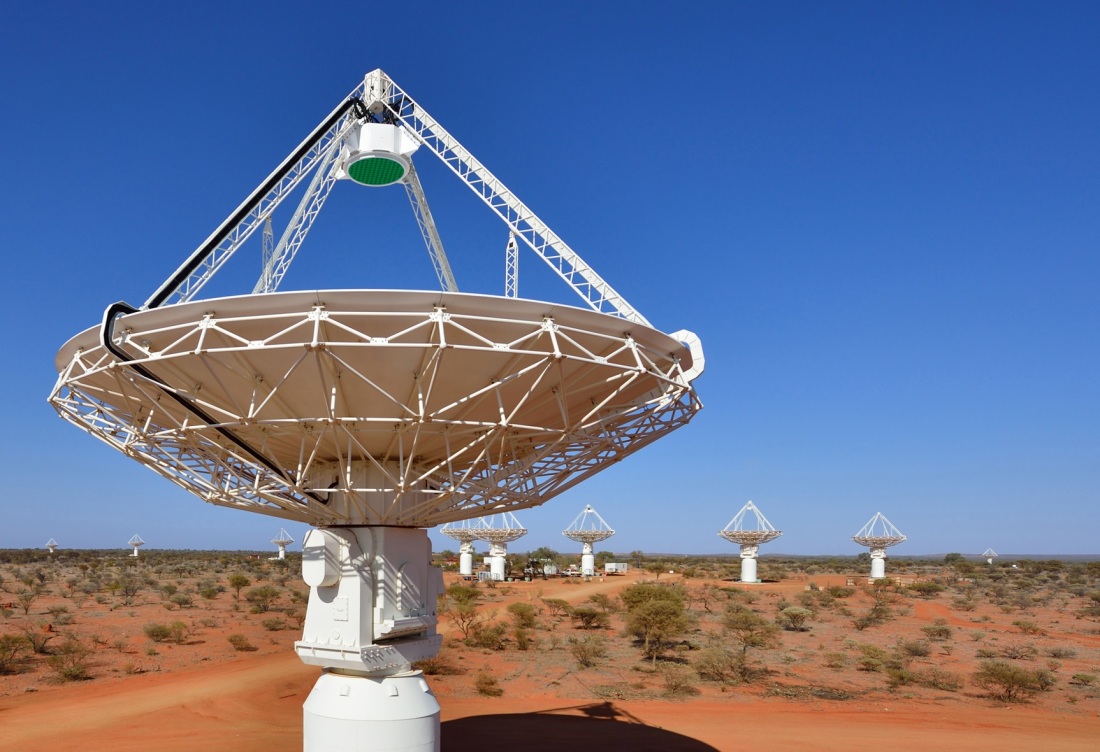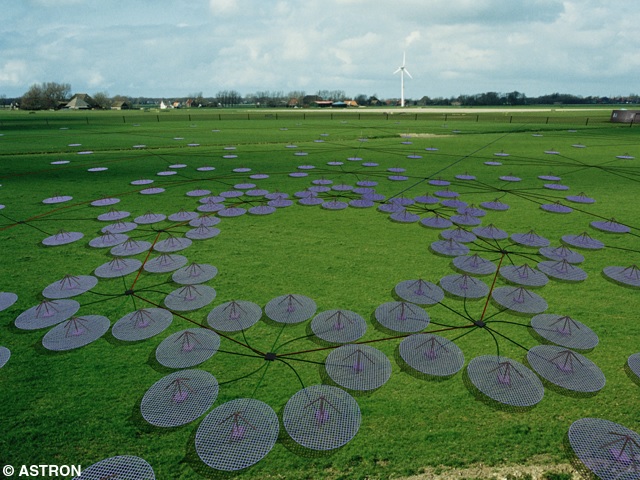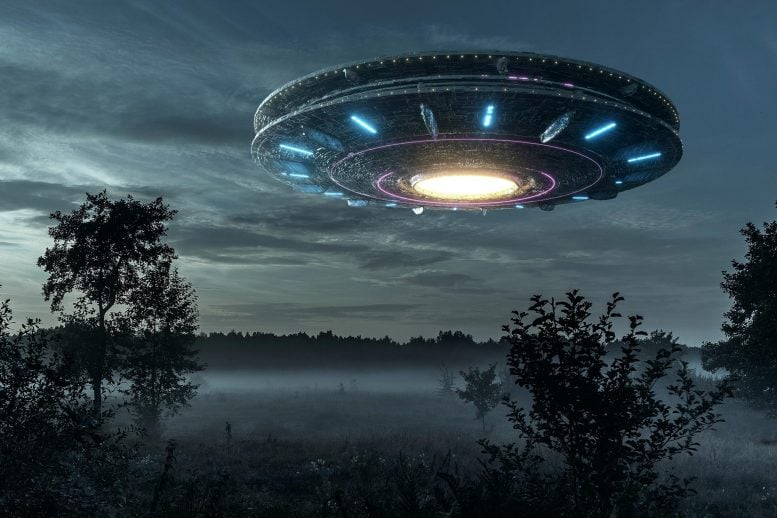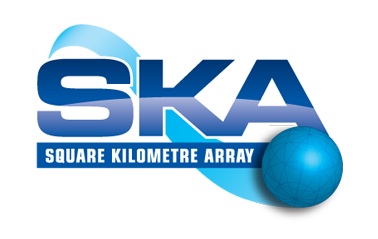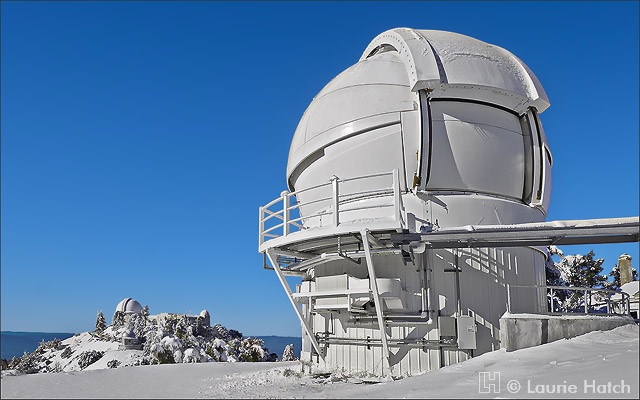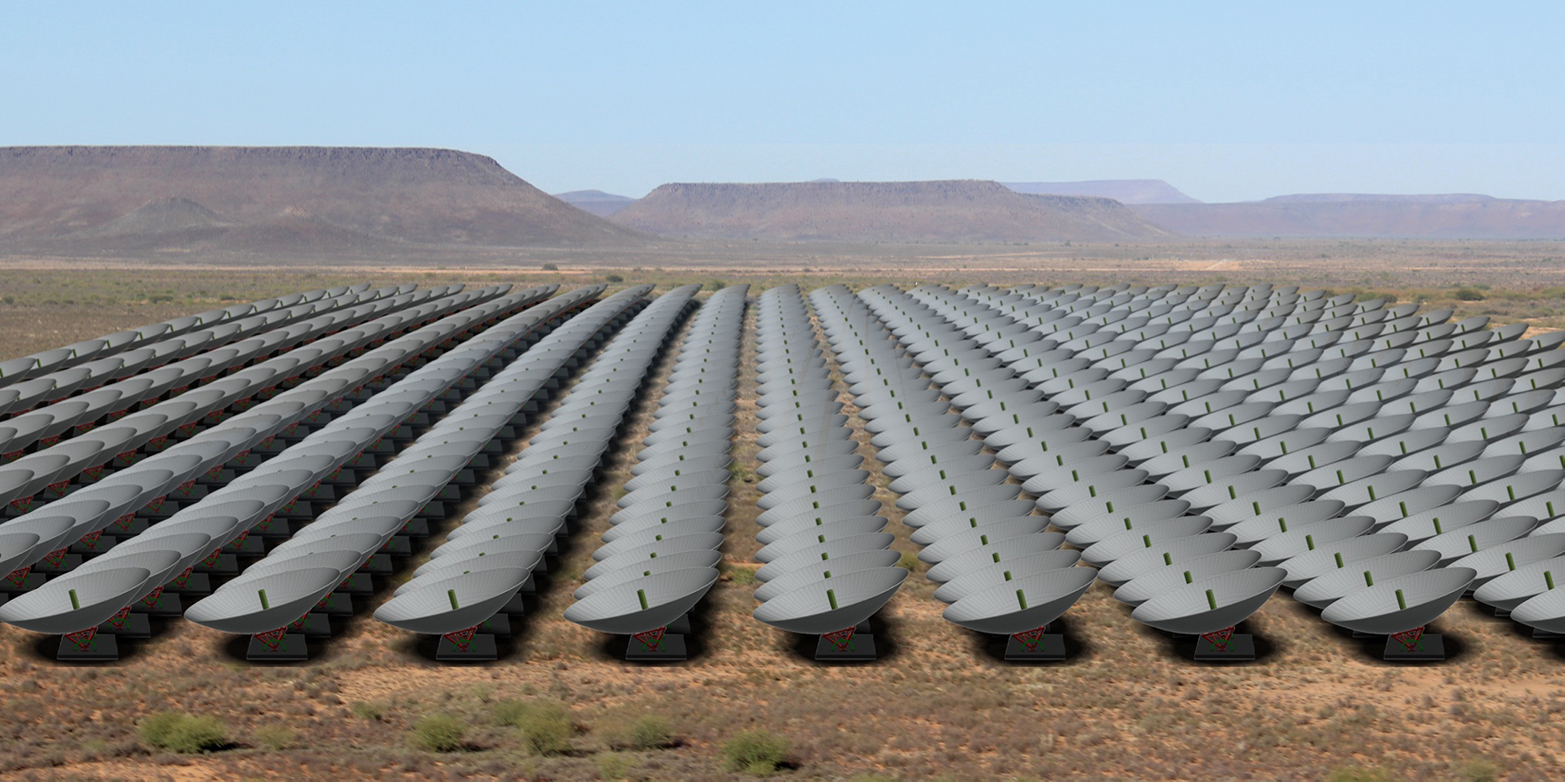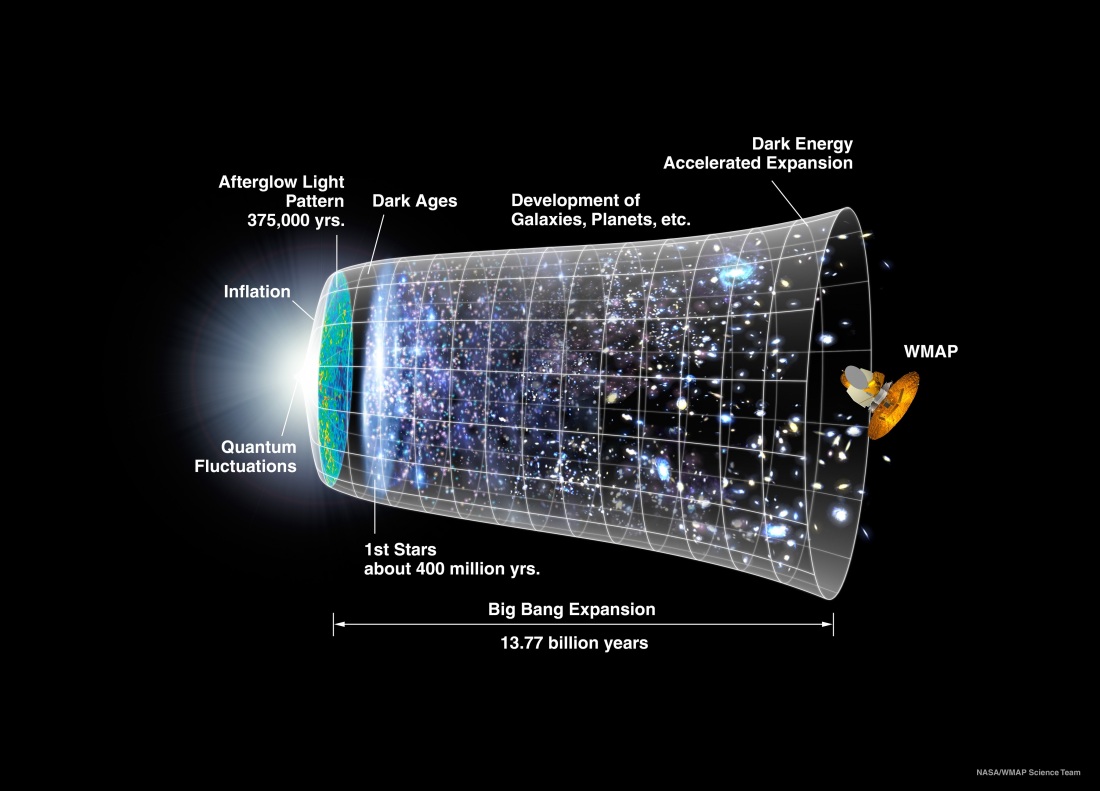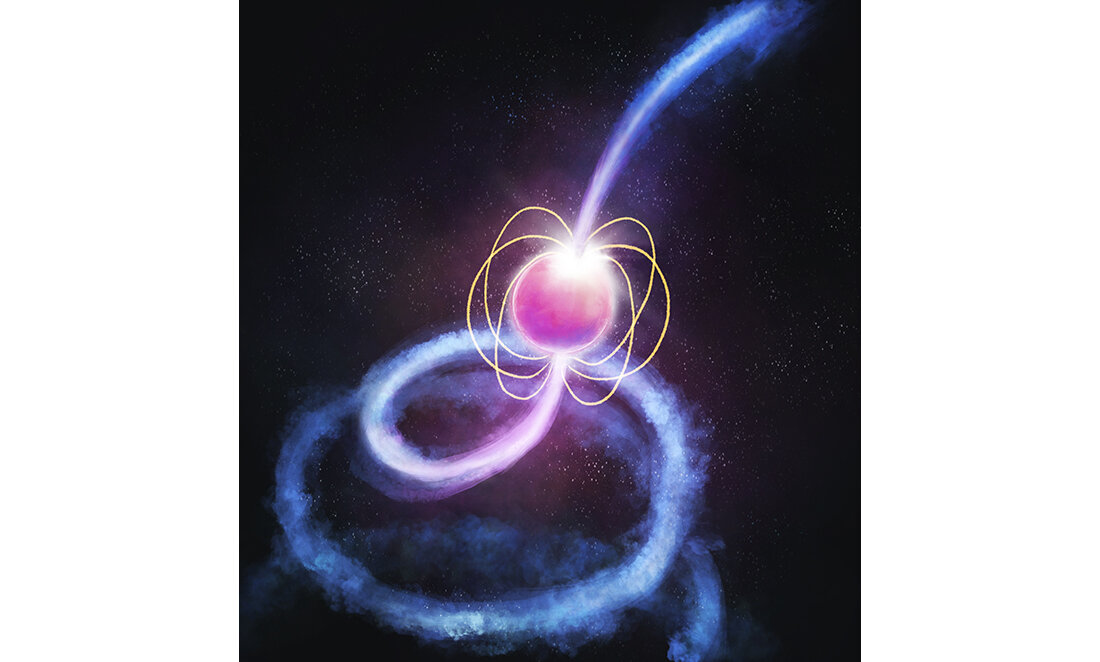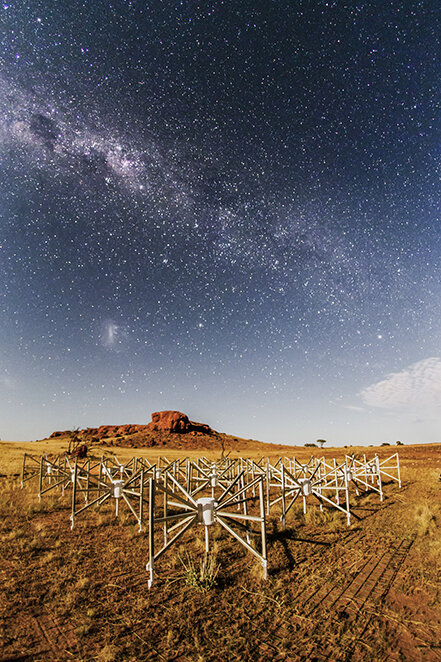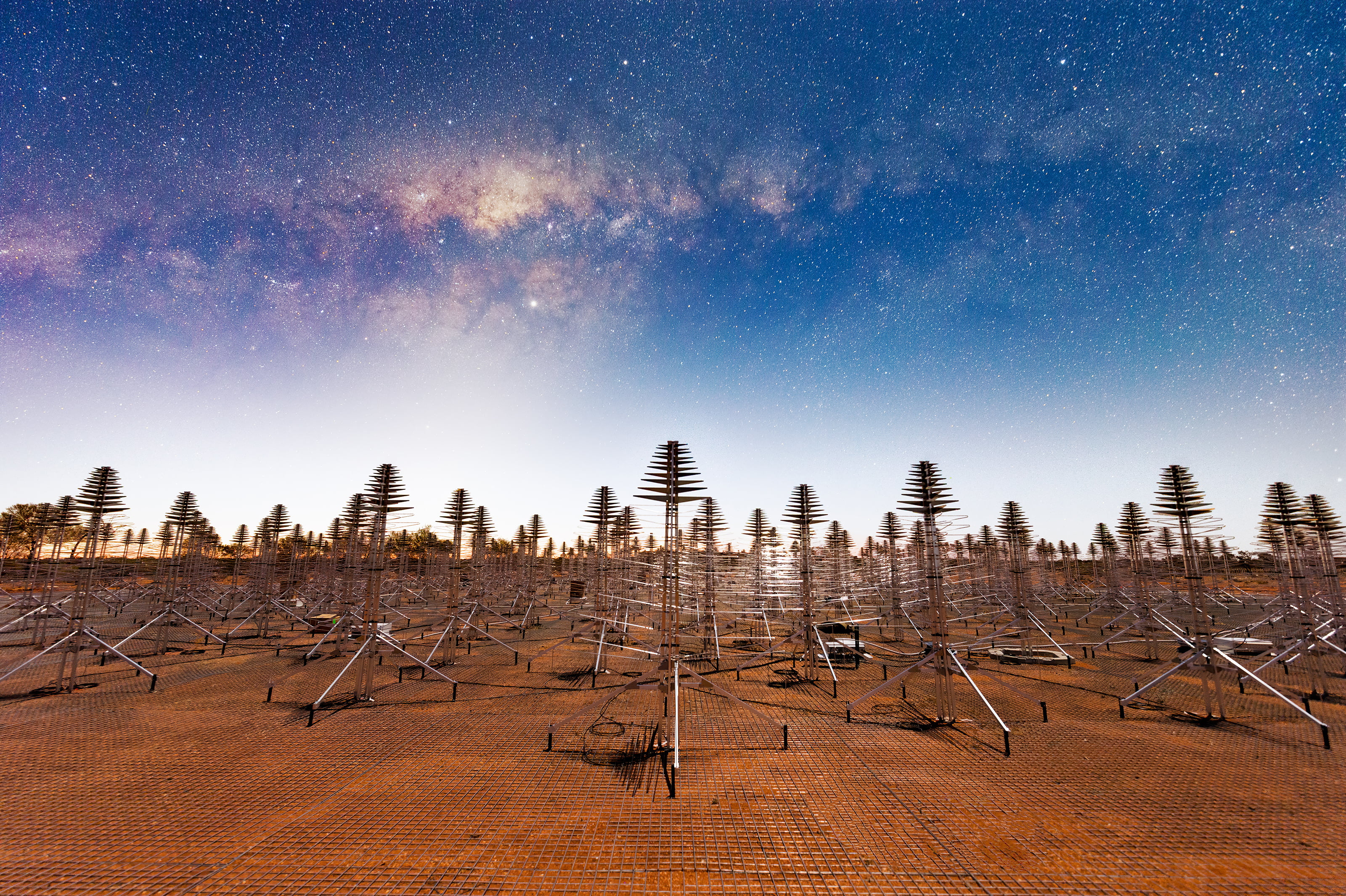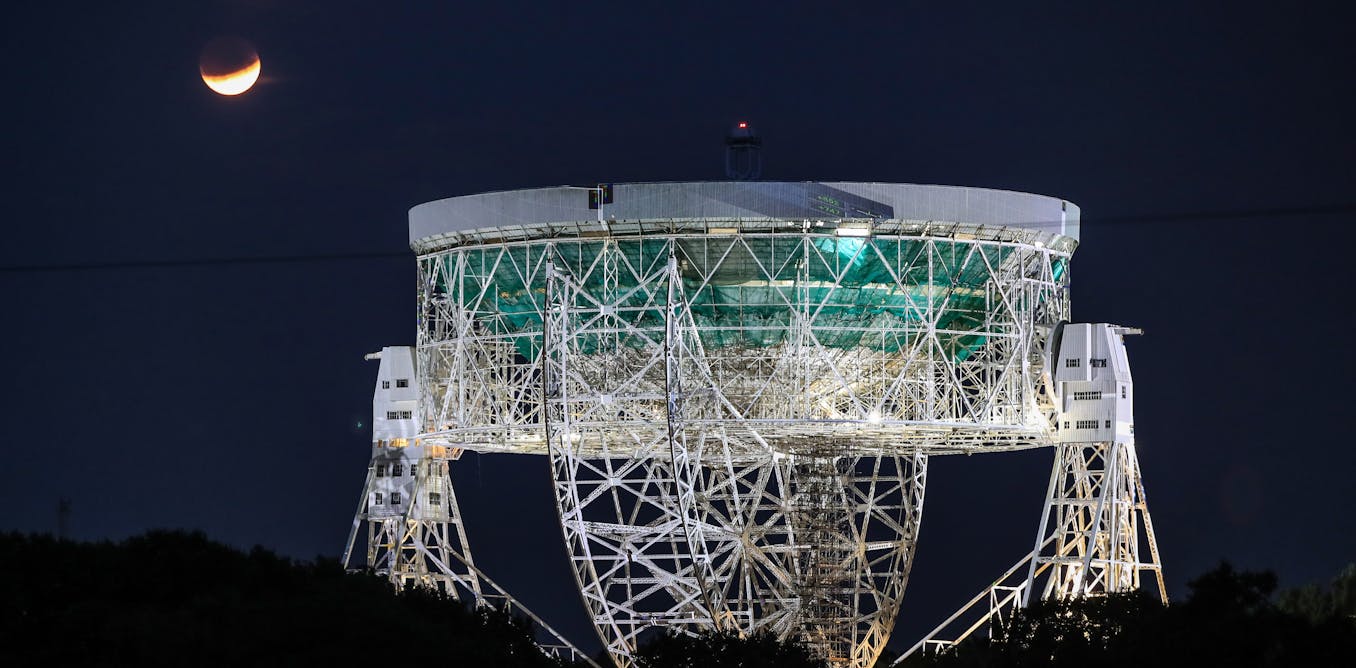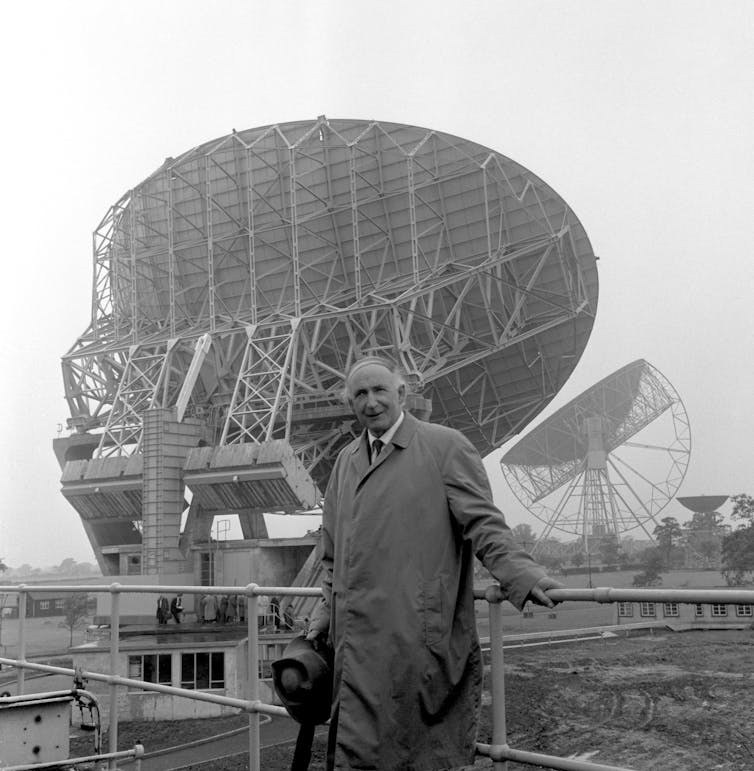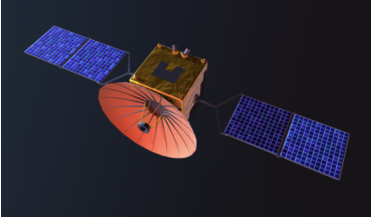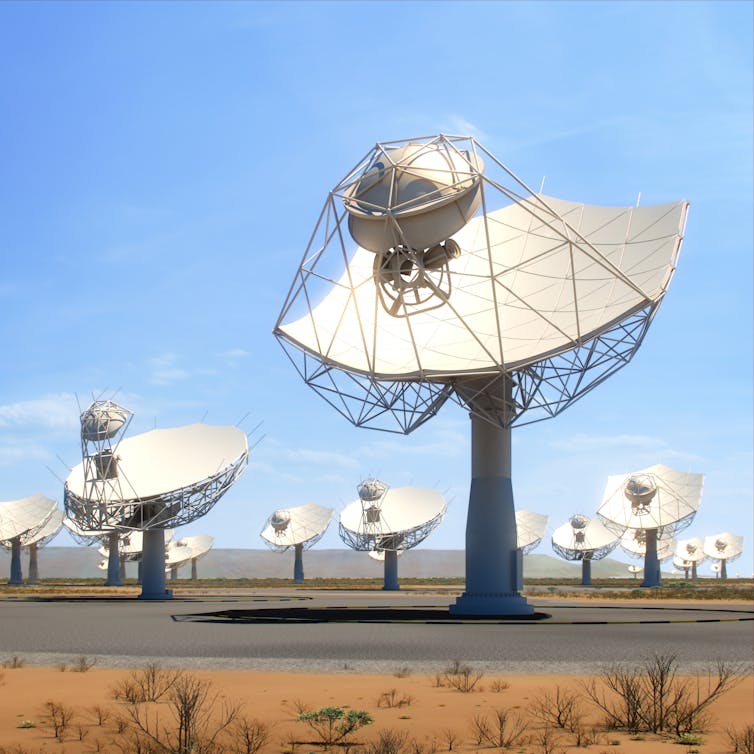From The Chinese Academy of Sciences [中国科学院](CN)
7.11.23
XU Ang
National Astronomical Observatories
E-mail: annxu@nao.cas.cn
The mystery of the first galaxies of the universe is an indomitable urge of human beings. The formation of them is mastered by the nature of dark matter which is also one of the most important problems faced by fundamental physics. However, understanding the nature of dark matter—for example, whether it is cold or warm—and its subsequent effect on the first galaxy formation is a huge challenge.
Now, a joint research team from Northeastern University (China) and the National Astronomical Observatories of the Chinese Academy of Sciences (NAOC) has proposed using a novel probe to try to shed light on the nature of dark matter and the early formation of galaxies simultaneously.
The team’s study was published in Nature Astronomy [below] on July 6.
Abstract
The absorption features in spectra of high-redshift background radio sources, caused by hyperfine structure lines of hydrogen atoms in the intervening structures, are known collectively as the 21-cm forest. They provide a unique probe of small-scale structures during the epoch of reionization, and can be used to constrain the properties of the dark matter (DM) thought to govern small-scale structure formation. However, the signals are easily suppressed by heating processes that are degenerate with a warm DM model. Here we propose a probe of both the DM particle mass and the heating history of the Universe, using the one-dimensional power spectrum of the 21-cm forest. The one-dimensional power spectrum measurement not only breaks the DM model degeneracy but also increases the sensitivity, making the probe actually feasible. Making 21-cm forest observations with the upcoming Square Kilometre Array has the potential to simultaneously determine both the DM particle mass and the heating level in the early Universe, shedding light on the nature of DM and the first galaxies.
Fig 1.
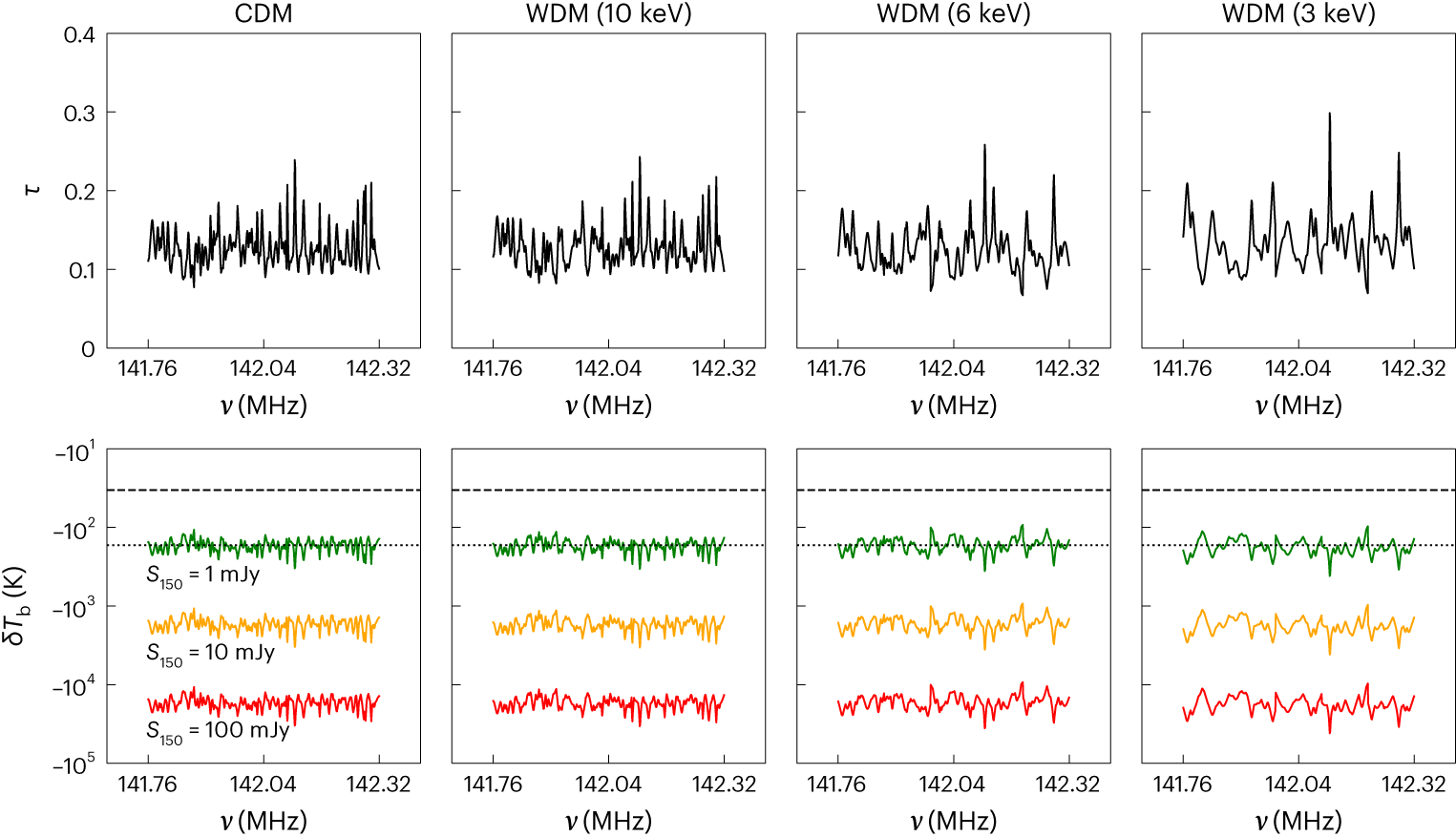
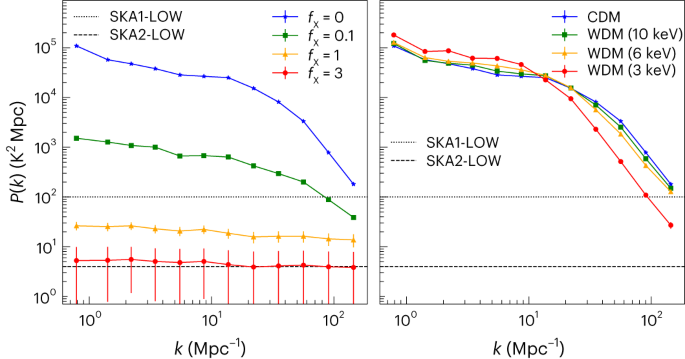
Fig. 2 The simulated 1-D power spectra of the 21-cm forest. (Image by Shao et al.)







One way of understanding dark matter is to try to measure the mass of dark matter particles through cosmological observations of small-scale structures. But detecting small-scale structures in which no star formation has ever occurred is difficult, especially during the cosmic dawn. Fortunately, atomic hydrogen gas in and around these dark, small structures from cosmic dawn creates 21-cm absorption lines along the lines of sight between Earth and high-redshift radio point sources. These absorption lines are known collectively as the 21-cm forest.
The 21-cm forest probe is a theoretical concept proposed more than 20 years to probe for gas temperatures and potentially for dark matter properties during the cosmic dawn. So far, scientists have not attempted to actually use the probe due to numerous challenges, including extremely weak signals, the difficulty in identifying high-redshift background sources, and the degeneracy between the mass of dark matter particles and the heating effect, which would prevent the probe from constraining either the particle mass or the heating effect from the first galaxies.
Recently, though, a number of high-redshift radio-loud quasars have been discovered. In addition, construction on the Square Kilometre Array (SKA)—an international initiative to build the world’s largest radio telescope—began last December. Both these developments suggest that using the 21-cm forest probe will soon be feasible.
Inspired by power spectrum analyses widely used in cosmological probes, the NAOC researchers realized that the distinctive scale-dependences of the signals caused by the warm dark matter effect and the heating effect, respectively, could be used to statistically extract key features to distinguish the two effects.
In this study, the researchers proposed a novel statistical solution to simultaneously solve the weak signal problem and the degeneracy problem, by measuring the one-dimensional (1-D) power spectrum of the 21-cm forest. The signal scale-dependence revealed by the amplitude and shape of the 1-D power spectrum makes the 21-cm forest probe a viable and effective means of simultaneously measuring dark matter properties and the thermal history of the Universe.
“By measuring the one-dimensional power spectrum of the 21-cm forest, we can not only make the probe actually feasible by increasing the sensitivity, but also provide a way to distinguish the effects of warm dark matter models and early heating process,” said XU Yidong, corresponding author of the study. “We will be able to kill two birds with one stone!”
In scenarios where cosmic heating is not too severe, SKA Phase 1’s low-frequency array [above] will be capable of effectively constraining both dark matter particle mass and gas temperature. In cases where cosmic heating is more significant, utilizing multiple background radio sources during SKA Phase 2 will enable robust detection capabilities.
The 21-cm forest offers a viable means for constraining dark matter at redshift ranges beyond the reach of other observations. By measuring the heating level, the 21-cm forest provides a way to constrain the spectral properties of the first galaxies and the first black holes, so as to shed light on the nature of the first bright objects in the Universe. Using the 21-cm forest probe will serve as an indispensable avenue for advancing our understanding of the early Universe and peering into the mysteries of both dark matter and the first galaxies.
Since application of the 21-cm forest probe is closely tied to observations of high-redshift background radio sources, the next step will also involve identifying more radio-bright sources at the cosmic dawn (such as radio-loud quasars and gamma-ray burst afterglows) that can be followed up in the SKA era.

See the full article here .
Comments are invited and will be appreciated, especially if the reader finds any errors which I can correct. Use “Reply”.
five-ways-keep-your-child-safe-school-shootings
Please help promote STEM in your local schools.
The Chinese Academy of Sciences[中国科学院](CN) is the national academy for the natural sciences of the People’s Republic of China. It has historical origins in the Academia Sinica during the Republican era and was formerly also known by that name. Collectively known as the “Two Academies (两院)” along with the Chinese Academy of Engineering, it functions as the national scientific think tank and academic governing body, providing advisory and appraisal services on issues stemming from the national economy, social development, and science and technology progress. It is headquartered in Xicheng District, Beijing, with branch institutes all over mainland China. It has also created hundreds of commercial enterprises, Lenovo being one of the most famous.
It is the world’s largest research organization, comprising around 60,000 researchers working in 114 institutes, and has been consistently ranked among the top research organizations around the world. It also holds the University of Science and Technology of China and the University of Chinese Academy of Sciences.
The Chinese Academy of Sciences has been ranked the No. 1 research institute in the world by Nature Index since the list’s inception in 2016 by Nature Portfolio. It is the most productive institution publishing articles of sustainable development indexed in Web of Science from 1981 to 2018 among all universities and research institutions in the world.
The Chinese Academy originated in the Academia Sinica founded, in 1928, by the Republic of China. After the Communist Party took control of mainland China in 1949, the residual of Academia Sinica was renamed Chinese Academy of Sciences (CAS), while others relocated to Taiwan.
The Chinese Academy of Sciences has six academic divisions:
Chemistry (化学部)
Information Technological Sciences (信息技术科学部)
Earth Sciences (地学部)
Life Sciences and Medical Sciences (生命科学和医学学部)
Mathematics and Physics (数学物理学部)
Technological Sciences (技术科学部)
The CAS has thirteen regional branches, in Beijing, Shenyang, Changchun, Shanghai, Nanjing, Wuhan, Guangzhou, Chengdu, Kunming, Xi’an, Lanzhou, Hefei and Xinjiang. It has over one hundred institutes and four universities (the University of Science and Technology of China at Hefei, Anhui, the University of the Chinese Academy of Sciences in Beijing, ShanghaiTech University, and Shenzhen Institute of Adavanced Technology). Backed by the institutes of CAS, UCAS is headquartered in Beijing, with graduate education bases in Shanghai, Chengdu, Wuhan, Guangzhou and Lanzhou, four Science Libraries of Chinese Academy of Sciences, three technology support centers and two news and publishing units. These CAS branches and offices are located in 20 provinces and municipalities throughout China. CAS has invested in or created over 430 science- and technology-based enterprises in eleven industries, including eight companies listed on stock exchanges.
Being granted a Fellowship of the Academy represents the highest level of national honor for Chinese scientists. The CAS membership system includes Academicians (院士), Emeritus Academicians (荣誉院士) and Foreign Academicians (外籍院士).
The Chinese Academy of Sciences was ranked #1 in the 2016, 2017, 2018, 2019, and 2020 Nature Index Annual Tables, which measure the largest contributors to papers published in 82 leading journals.
Research institutes
Beijing Branch
University of the Chinese Academy of Sciences (UCAS)
Academy of Mathematics and Systems Science
Institute of Acoustics (IOA)
Institute of Atmospheric Physics
Institute of Botany, Chinese Academy of Sciences
Institute of Physics (IOPCAS)
Institute of Semiconductors
Institute of Electrical Engineering (IEE)
Institute of Information Engineering (IIE)
Institute of Theoretical Physics
Institute of High Energy Physics
Institute of Biophysics
Institute of Genetics and Developmental Biology
Institute of Electronics
National Astronomical Observatories
Institute of Computing Technology
Institute of Software
Institute of Automation
Beijing Institute of Genomics
Institute of Geographic Sciences and Natural Resources
Institute of Geology and Geophysics (IGG)
Institute of Remote Sensing and Digital Earth
Institute of Tibetan Plateau Research
Institute of Vertebrate Paleontology and Paleoanthropology
National Center for Nanoscience and Technology
Institute of Policy and Management
Institute of Psychology
Institute of Zoology
Changchun Branch
Changchun Institute of Optics, Fine Mechanics and Physics
Changchun Institute of Applied Chemistry
Northeast Institute of Geography and Agroecology
Changchun Observatory
Chengdu Branch
Institute of Mountain Hazards and Environment
Chengdu Institute of Biology
Institute of Optics and Electronics
Chengdu Institute of Organic Chemistry
Institute of Computer Application
Chongqing Institute of Green and Intelligent Technology
Guangzhou Branch
South China Botanical Garden
Shenzhen Institutes of Advanced Technology
South China Sea Institute of Oceanology
Guangzhou Institute of Energy Conversion
Guangzhou Institute of Geochemistry
Guangzhou Institute of Biomedicine and Health
Guiyang Branch
Institute of Geochemistry
Hefei Branch
Hefei Institutes of Physical Science
University of Science and Technology of China
Kunming Branch
Kunming Institute of Botany
Kunming Institute of Zoology
Xishuangbanna Tropical Botanical Garden
Institute of Geochemistry
Yunnan Astronomical Observatory
Lanzhou Branch
Institute of Modern Physics
Lanzhou Institute of Chemical Physics
Lanzhou Institute of Geology
Northwest Institute of Plateau Biology
Northwest Institute of Eco-Environment and Resources
Qinghai Institute of Salt Lakes Research
Nanjing Branch
Purple Mountain Observatory (Zijinshan Astronomical Observatory)
Institute of Soil Science
Nanjing Institute of Geology and Palaeontology
Nanjing Institute of Geography and Limnology
Nanjing Institute of Astronomical Optics and Technology
Suzhou Institute of Nano-tech and Nano-bionics (SINANO)
Suzhou Institute of Biomedical Engineering and Technology (SIBET)
Nanjing Botanical Garden, Memorial Sun Yat-Sen (Institute of Botany, Jiangsu Province and Chinese Academy of Science)
University of Chinese Academy of Sciences, Nanjing College
Shanghai Branch
Shanghai Astronomical Observatory
Shanghai Institute of Microsystem and Information Technology
Shanghai Institute of Technical Physics
Shanghai Institute of Optics and Fine Mechanics
Shanghai Institute of Ceramics
Shanghai Institute of Organic Chemistry
Shanghai Institute of Applied Physics
Shanghai Institutes for Biological Sciences
Shanghai Institute of Materia Medica
Institut Pasteur of Shanghai
Shanghai Advanced Research Institute, CAS
Institute of Neuroscience (ION)
ShanghaiTech University
Shenyang Branch
Institute of Metal Research
Shenyang Institute of Automation
Shenyang Institute of Applied Ecology, formerly the Institute of Forestry and Pedology
Shenyang Institute of Computing Technology
Dalian Institute of Chemical Physics
Qingdao Institute of Oceanology
Qingdao Institute of Bioenergy and Bioprocess Technology
Yantai Institute of Coastal Zone Research
Taiyuan Branch
Shanxi Institute of Coal Chemistry (ICCCAS)
Wuhan Branch
Wuhan Institute of Rock and Soil Mechanics
Wuhan Institute of Physics and Mathematics
Wuhan Institute of Virology
Institute of Geodesy and Geophysics
Institute of Hydrobiology
Wuhan Botanical Garden
Xinjiang Branch
Xinjiang Technical Institute of Physics and Chemistry
Xinjiang Institute of Ecology and Geography
Xi’an Branch
Xi’an Institute of Optics and Precision Mechanics
National Time Service Center
Institute of Earth Environment









